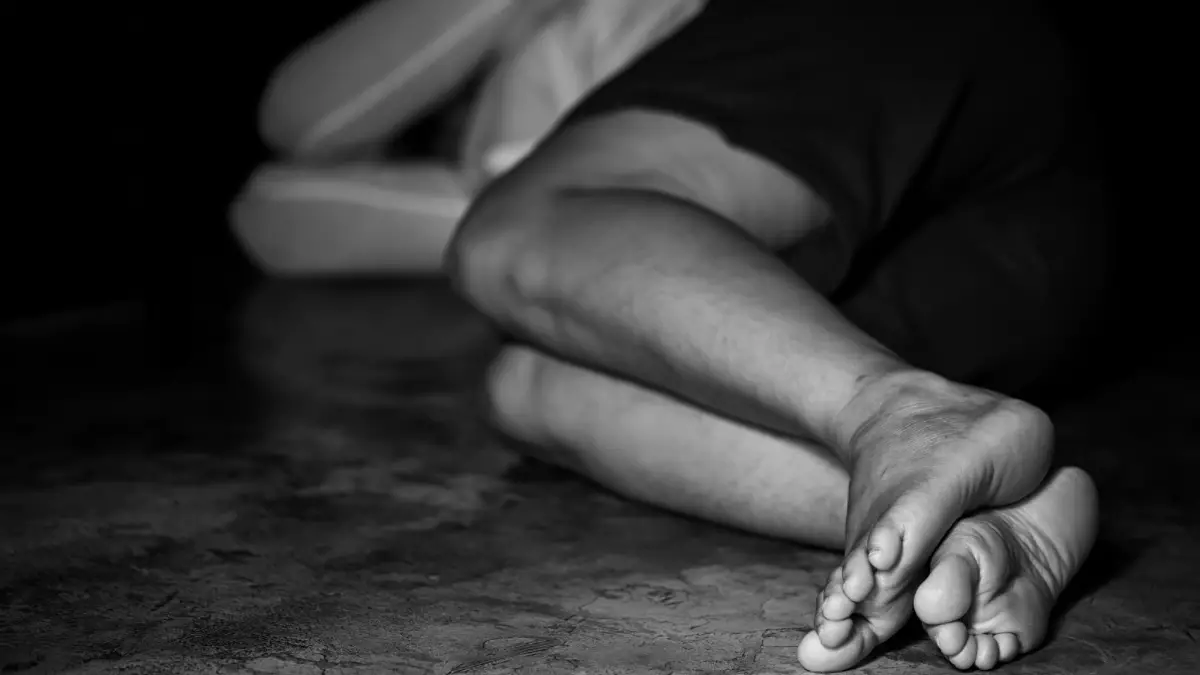More often than not, we see people who choose to stay in abusive relationships despite advice from loved ones urging them to leave. It is hard to understand why someone would choose to remain in a situation that constantly belittles them, with someone who abuses them either physically, emotionally, or mentally. It’s hard to understand; however, there is a psychological concept that explains why people might remain in abusive relationships, and this concept is called Stockholm Syndrome.
Stockholm syndrome is the term used to describe the positive bond that hostage victims form with their captors. This can be related to abusive relationships where the victims develop a bond and feel empathy or affection toward their abuser. This affection makes it hard for them to leave the situation despite its harm.
This article will explain the psychological, emotional, and social factors that prompt and contribute to attachment. Exploring how fear, manipulation, and pressure from society make victims trapped in abusive relationships.
An understanding of these dynamics will help break the cycle and provide help and support to victims.
Understanding Stockholm Syndrome
Stockholm Syndrome is a psychological condition in which kidnapping or abuse victims get emotionally attached or develop loyalty and empathy for their captors or abusers. The origin of this term is often traced back to a 1973 bank robbery in Stockholm, Sweden. Where hostages who were held for six days began sympathizing with their captors and even defended them after their release. Psychologists observed that this unexpected bond was a complete contradiction of the victims’ situation of fear and danger. It led to the identification of this phenomenon.
The psychological mechanics of Stockholm Syndrome are said to be a response as a result of the brain’s survival instincts. When someone is in a threatening situation, they may subconsciously adopt coping mechanisms like identifying with the abuser to reduce feelings of fear. Frequently, the captor uses intermittent kindness, creating a form of confusion and emotional dependency in the victim. Fear, combined with scattered moments of perceived compassion, makes the victim feel grateful, leading to attachment and loyalty.
This same dynamic is also reflected in abusive relationships. The abuser isolates and manipulates the victim, making the victim see the abuser as their only source of support. As strange as it sounds, they justify the abusive behavior and hope for change. For example, they say things like, “It’s not their fault; my stubbornness makes them angry.” “They are nice; they just have bad days.” or “It’s not that serious; I can change them.” Over time, this distorted sense of reality that builds up in the victim’s mind makes escaping the situation incredibly difficult despite the abuse they endure.
Psychological Mechanisms in Abusive Relationships
In abusive relationships, victims are kept trapped primarily through psychological mechanisms like fear, manipulation, and power dynamics. Most times, abusers employ the tactics of fear and control. They threaten victims with physical or emotional harm as a way to exert dominance, thereby creating a sense of fear in victims. This fear is compounded by manipulation, where the abuser controls the victim’s actions, limits their access to resources, or isolates them from friends and family. The power dynamic that has the abuser holding all authority leaves the victim feeling powerless and unable to escape the relationship without severe consequences.
Cognitive dissonance, which means holding on to contradictory beliefs and behaviors, further complicates the situation. Victims are well aware of their abuse, but they have somehow managed to develop emotional attachments to their abuser. And this leads to an internal conflict within them. To deal with their conflicting feelings, they may explain away or give flimsy justifications for the abuser’s behavior, downplaying the severity of the abuse or blaming themselves for the situation. This mental struggle creates a cycle of self-doubt and confusion, making it harder for victims to recognize and acknowledge the reality of their circumstances.
Also, on occasions when the abuser becomes kind to them, their dissonance is reinforced, and this makes them think/believe that the abuser might actually be changing and their situation might eventually improve.
As time goes on, victims can develop learned helplessness. This is a psychological condition where they feel like it is impossible to change or leave the abusive situation. This helplessness comes from repeated exposure to abuse, and victims may come to believe that no matter what they do, they cannot stop the abuse. This sense of helplessness robs them of their confidence, trapping them in a state of submission and hopelessness. Learned helplessness is very dangerous because it makes victims believe that they deserve the abuse or that escaping it is impossible.
All of these psychological mechanisms, fear, cognitive dissonance, and learned helplessness, put the victims in a chokehold, making it difficult to break free from abusive relationships.
Social and Cultural Influences
Society and cultural environment play a significant role in getting victims stuck in abusive relationships because abusers tend to leverage a faulty cultural environment through various ways, like isolation. Most times, abusers use isolation as a tactic to keep their victims in abusive relationships by cutting off their support systems like family and friends, thereby making the victims increasingly dependent on them. This isolation not only deepens the victim’s emotional bond with the abuser but also makes it more difficult for them to seek help or recognize the severity of their situation.
Moreover, stigma and shame make escaping even more difficult. In a flawed society where people are quick to place blame on victims and question them on why they remain in the relationship or assume they’re at fault for the abuse, victims are always reluctant to share their experiences or ask for help. They often fear that they might be misunderstood, and this discourages them from leaving, making them more entrapped.
Additionally, flawed cultural norms, where the idea that men are dominant and women should always be submissive no matter the circumstances, create an environment that constantly overlooks abuse or accepts it as part of what a relationship should entail. This flaw and societal pressure make victims remain in abusive relationships as they may think that it is a part of their duty and that leaving would mean defying their culture.
The Role of Self-Perception
As the abuse continues over a long time, a victim’s self-esteem is progressively damaged severely, and this makes them feel unworthy of love or respect; they feel like they are doomed to be treated that way and do not deserve any better treatment. As the victims continuously internalize all the negative messages from their abuser, they begin to blame themselves and believe that they actually deserve to be treated badly.
Also, the fear of the unknown adds to the hesitation of victims. They say statements like “the devil you know is better than the angel you don’t.” They believe that leaving their abuser means they would have to face uncertainties like financial instability, emotional challenges, or even judgment from society. The anxiety of an unpredictable future often outweighs the known pain of staying, thereby building up the victim’s reluctance to escape the abusive situation.
Breaking Free from Stockholm Syndrome
Breaking free from Stockholm Syndrome is easier said than done but not impossible. It requires a great level of awareness, support, and focus on empowerment.
The first step to finding a solution and recovery is recognizing the problem, and the same goes for Stockholm Syndrome. Usually, this psychological issue is characterized by victims developing emotional attachment towards their abuser even when harm is being inflicted on them, and the first step to recovering is understanding that the feelings of attachment come from the psychological manipulation by the abuser and the survival instincts of the victim. This understanding can help victims to reframe their situation and know that they are not to blame for their abuse.
Also, one major mechanic used by abusers is isolation; therefore, breaking free should involve forming support systems. This can be done through therapy and counseling sessions where victims can safely explore their emotions, identify unhealthy patterns, and rebuild their self-esteem. Support can also come from family and friends who offer validation and practical help. All this support helps the victims to know that they are not alone, and this gives them the boldness to take steps toward freedom.
Another major step towards recovery would be empowerment, where victims reclaim their power and build their confidence. This empowerment can be achieved by setting small goals and regaining control over their lives in little yet significant ways, such as seeking employment, pursuing education, or reconnecting with loved ones. Additionally, to overcome Stockholm Syndrome, victims would need to be self-aware and learn to trust their instincts again.
As the victims become empowered, they begin to have a sense of autonomy, and this gives them the strength and boldness to leave abusive relationships and work towards building a healthy and independent future.
In conclusion, Stockholm Syndrome is the major reason why individuals stay in abusive relationships, with psychological, emotional, and social factors like fear, manipulation, and isolation deepening their attachment to the abuser. Recognizing the signs, rebuilding self-worth, and seeking external support are essential for breaking free.
Dear reader, if you are a victim of an abusive relationship, this is your reminder that it is not your fault and you have the power to break free. If you are someone who knows a victim, do not be quick to judge; rather, encourage them, remind them of their worth, and seek help for them through counseling and therapy.







